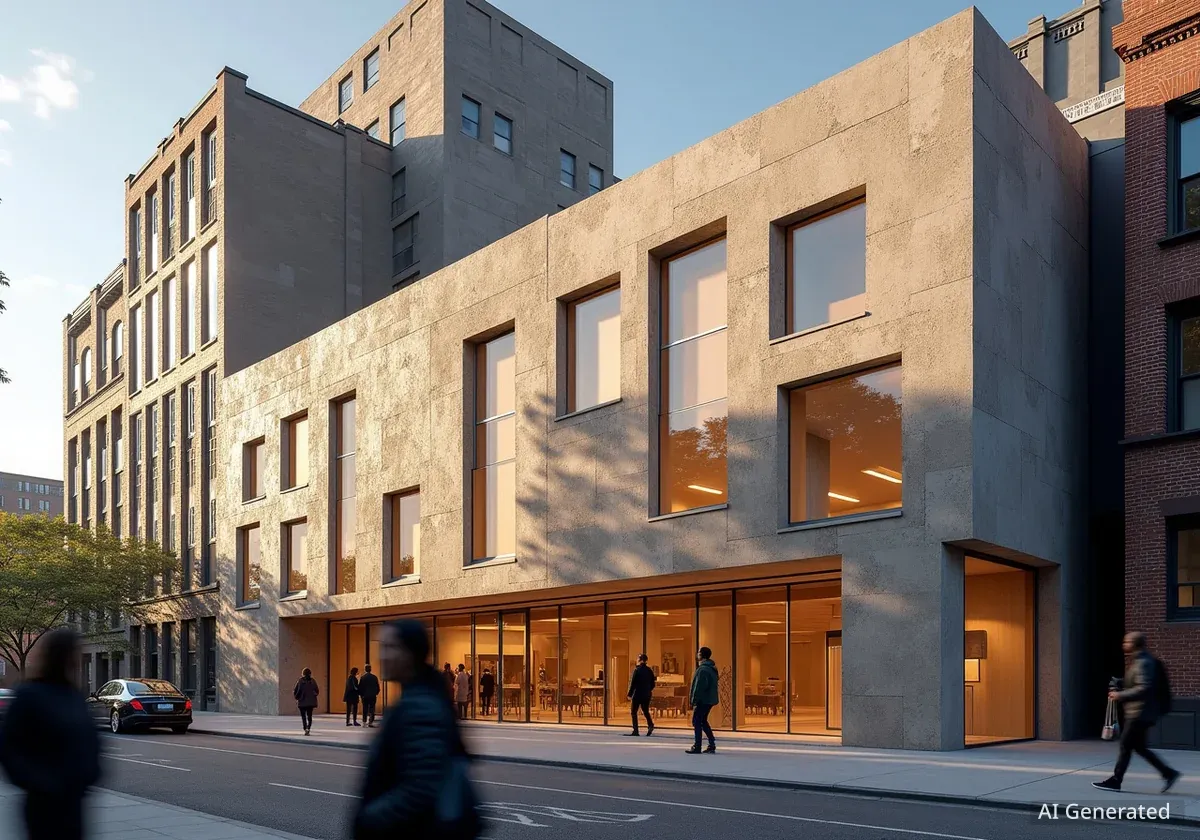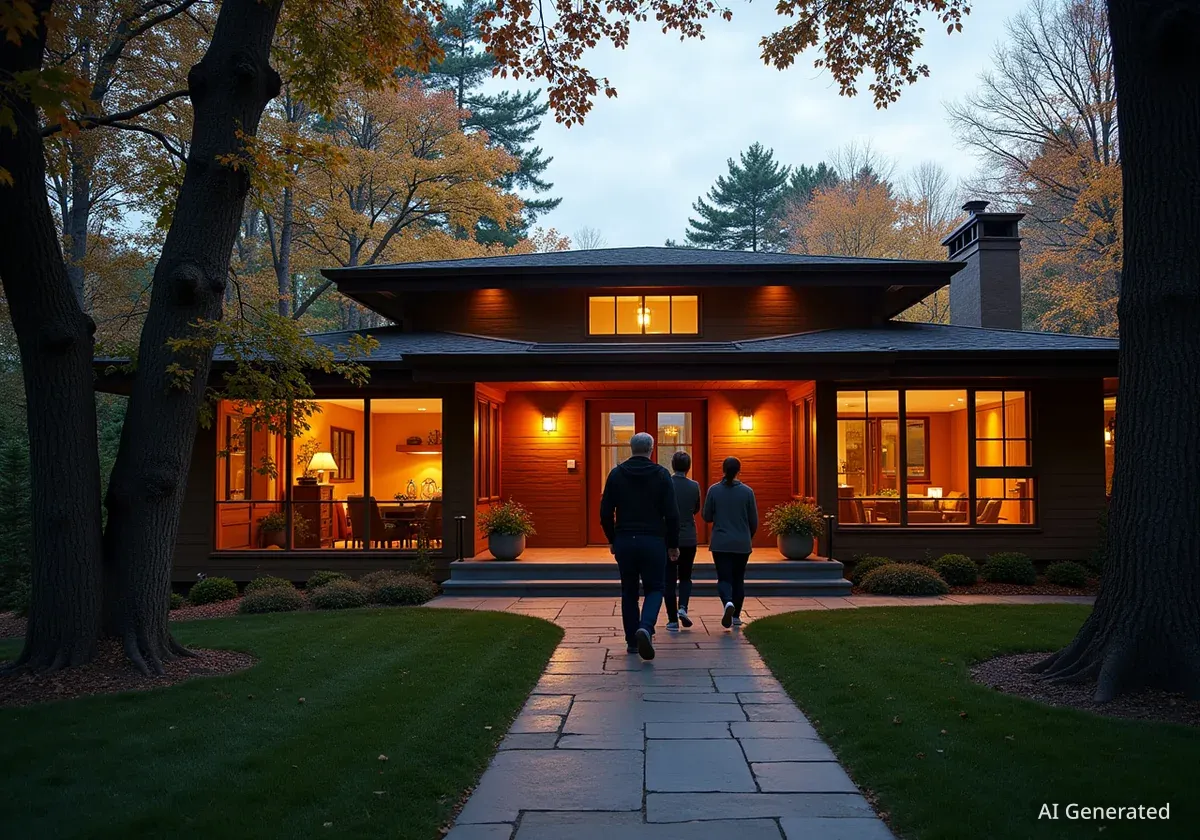A new initiative, 'The Granaries of Gaza,' by Studio nab, proposes a comprehensive two-phase reconstruction plan for the Gaza Strip. This project aims to address the severe humanitarian crisis and widespread destruction in the region by focusing on immediate relief and long-term sustainable rebuilding. The strategy seeks to restore dignity and autonomy to Gaza's communities through innovative architectural, agricultural, and social repair methods.
Key Takeaways
- Studio nab proposes a two-phase reconstruction plan for Gaza.
- The plan addresses acute food insecurity, devastated infrastructure, and destroyed healthcare facilities.
- Phase one focuses on recycling rubble into modular shelters for immediate relief.
- Phase two involves offshore platforms for housing, agriculture, and renewable energy.
- The project emphasizes self-sufficiency, traditional Palestinian techniques, and ecological sustainability.
Gaza Faces Urgent Humanitarian Crisis
Months of conflict have led to widespread devastation across the Gaza Strip. Housing, critical infrastructure, and essential services have been severely damaged or destroyed. The population is enduring extremely challenging conditions, with acute food insecurity affecting all residents. More than 1,400 healthcare workers have been killed, and over 30 hospitals are either destroyed or unable to operate. The collapse of water and sanitation systems has significantly increased the risk of disease outbreaks. Furthermore, nearly constant electricity outages hinder the functioning of vital equipment, exacerbating the crisis.
Current Conditions
- Acute Food Insecurity: Affects 100% of residents.
- Healthcare Casualties: Over 1,400 healthcare workers killed.
- Hospital Damage: More than 30 hospitals destroyed or inoperative.
- Infrastructure Collapse: Water and sanitation systems are largely non-functional.
- Electricity: Nearly constant outages severely impact operations.
A New Approach to Reconstruction
The 'Granaries of Gaza' project is not a typical aid program. Instead, it is designed as a comprehensive civic, social, and ecological reconstruction strategy. It is built on two core principles: affirming the right of Gazans to dignified housing and self-governance, and recognizing the immense volume of rubble—over 50 million tons—as a valuable resource for rebuilding, rather than mere waste. This approach transforms a challenge into an opportunity for sustainable development.
"The Granaries of Gaza is conceived not as a conventional aid program but as a civic, social, and ecological reconstruction strategy," states Studio nab. "It is grounded in two key observations: the right of Gazans to dignified housing and autonomy, and the unprecedented presence of more than 50 million tons of rubble, material that can serve as the foundation for rebuilding rather than waste to be removed."
Phase One: Onshore Humanitarian Platforms
The first stage of Studio nab's plan focuses on immediate and adaptable relief. War debris is processed and recycled into modular concrete blocks. These blocks are then lightened with straw to create bioclimatic shelters. These shelters are designed to provide displaced families with essential protection, privacy, and basic services. They also serve as workspaces for local craftspeople and volunteers involved in the reconstruction efforts.
The shelters incorporate principles of natural ventilation, effective shading, and optimal orientation to ensure comfort. They can also integrate systems for water, energy, and sanitation, promoting self-sufficiency from the outset. These transitional structures lay the groundwork for the more extensive second phase of the project.
Bioclimatic Design
Bioclimatic architecture aims to create comfortable indoor environments by using local climate conditions and natural energy sources. This includes designing buildings to maximize natural light, ventilation, and solar heating or cooling, thereby reducing reliance on mechanical systems and external energy.
Phase Two: Offshore Extensions for Long-Term Growth
Building upon the initial phase, the second stage introduces modular offshore platforms. These platforms are designed to expand the city's footprint, providing new areas for housing, agricultural farms, markets, schools, hospitals, and renewable energy systems. Each platform functions as a self-sufficient ecosystem, with approximately two-thirds of its area offshore and one-third onshore. This design allows for independent production of food, water, and energy.
The onshore shelters from phase one will be reused or relocated during this stage. The concrete modules from these shelters can be repurposed into seawalls or other urban structures, minimizing waste and maximizing resource efficiency. This adaptive reuse demonstrates the project's commitment to sustainability and circular economy principles.
Integrating Agriculture, Heritage, and Energy
A core component of 'The Granaries of Gaza' is its integration of regenerative agriculture. The project plans to implement various farming techniques, including aquaponics, hydroponics, and the raising of poultry and goats. It also emphasizes the cultivation of traditional Palestinian crops like za'atar and olives. Shared granaries, designed with natural thermal regulation, will ensure food storage and distribution year-round. This reduces dependence on vulnerable external supply chains, enhancing local food security.
- Agricultural Methods: Aquaponics, hydroponics, poultry, goat farming.
- Traditional Crops: Za’atar, olives.
- Food Storage: Shared granaries with natural thermal regulation.
- Goal: Reduce dependence on external food supplies.
Construction methods will draw on traditional Palestinian building techniques, such as rammed earth. The designs will reference historical structures like silos, communal ovens, and clay beehives. This approach aims to preserve local knowledge and cultural heritage while strengthening both material and cultural autonomy within the community. Studio nab's strategy ensures that the rebuilding process respects and integrates with Gaza's rich history.
Sustainable Energy and Water Systems
The floating platforms are designed to generate energy through multiple renewable sources. These include solar panels, wind turbines, wave energy converters, and biogas systems. This diverse energy mix ensures reliability and reduces reliance on external power grids. The project also incorporates dual water systems: seawater desalination for drinking water and natural wastewater treatment for agricultural use. These systems support long-term environmental resilience and self-sufficiency.
By transforming rubble into valuable resources and linking emergency response with sustainable development, 'The Granaries of Gaza' aims to restore autonomy and resilience to the population. This collective act of care combines architecture, agriculture, and cultural continuity, offering a systemic path forward for the region.




